The Effect of Random Roughness for Fully Developed Forced Flow in Square Microchannels
Abstract
1. Introduction to Microchannels and Their Applications
1.1. Heat Transfer in Microchannels
1.2. Effect of Viscous Dissipation in Microchannels Flows
1.3. Uncertainty in Microchannel Cross-Section: Fabrication Techniques
1.4. The Role of Roughness in Microfluidics
1.5. Objectives of the Present Study
2. Drawing a Square Cross-Section with Random Roughness
3. Heat and Mass Transfer Analysis Model
Perfectly Smooth Square Microchannel Case and Mesh Independence Test
4. Results
Statistical Significance Test
5. Conclusions
- The statistical analysis performed shows a satisfactory statistical significance; thus, the results can be considered statistically reliable.
- The analysis shows a general tendency for heat transfer performance to deteriorate as the relative roughness of the boundary walls increases (compared with the smooth microchannel case): the Nusselt number is a monotonic decreasing function of the relative roughness for the three possible boundary conditions considered, – – . This conclusion clashes with part of the results presented in the literature which states that roughness can increase the heat transfer performances. This issue may have a possible explanation: by assuming a fully developed flow, we neglect the effect of flow disruption in the axial direction possibly caused by the presence of a three-dimensional random roughness. The flow disruption, indeed, has been proven to enhance the heat and mass transfer performances.
- The analysis shows, from a hydrodynamic point of view, an increment in the Poiseuille number for increasing values of the relative roughness of the boundary walls. This implies an increasing mechanical power needed to support the fluid flow through the microchannel due to the presence of the roughness and, hence, a deterioration in the hydrodynamic performances for increasing values of relative roughness. This conclusion relates to the one just formulated for the heat transfer since they both highlight a deterioration effect of the roughness on the microchannel performances.
- These findings highlight the critical role of wall roughness in determining heat and mass transfer efficiency, emphasizing the need for a deeper understanding of roughness effects when designing microchannel systems.
Author Contributions
Funding
Data Availability Statement
Conflicts of Interest
References
- Bruus, H. Theoretical Microfluidics; Oxford University Press: Oxford, UK, 2007; Volume 18. [Google Scholar]
- Yarin, L.; Mosyak, A.; Hetsroni, G. Fluid Flow, Heat Transfer and Boiling in Micro-Channels; Springer: Berlin/Heidelberg, Germany, 2009. [Google Scholar]
- Cotta, R.M.; Knupp, D.C.; Naveira-Cotta, C.P. Analytical Heat and Fluid Flow in Microchannels and Microsystems; Springer: Cham, Switzerland, 2016; Volume 164. [Google Scholar]
- Kandlikar, S.; Garimella, S.; Li, D.; Colin, S.; King, M.R. Heat Transfer and Fluid Flow in Minichannels and Microchannels; Elsevier: Amsterdam, The Netherlands, 2005. [Google Scholar]
- Karniadakis, G.; Beskok, A.; Aluru, N. Microflows and Nanoflows: Fundamentals and Simulation; Springer Science & Business Media: New York, NY, USA, 2006; Volume 29. [Google Scholar]
- Gunnasegaran, P.; Mohammed, H.; Shuaib, N.; Saidur, R. The effect of geometrical parameters on heat transfer characteristics of microchannels heat sink with different shapes. Int. Commun. Heat Mass Transf. 2010, 37, 1078–1086. [Google Scholar] [CrossRef]
- Gulhane, N.P.; Mahulikar, S.P. Variations in gas properties in laminar micro-convection with entrance effect. Int. J. Heat Mass Transf. 2009, 52, 1980–1990. [Google Scholar] [CrossRef]
- Conder, T.E.; Solovitz, S.A. Computational optimization of a groove-enhanced minichannel. Heat Transf. Eng. 2011, 32, 876–890. [Google Scholar] [CrossRef]
- Kumar, V.; Paraschivoiu, M.; Nigam, K. Single-phase fluid flow and mixing in microchannels. Chem. Eng. Sci. 2011, 66, 1329–1373. [Google Scholar] [CrossRef]
- Colin, S. Gas microflows in the slip flow regime: A critical review on convective heat transfer. J. Heat Transfer. 2012, 134, 020908. [Google Scholar] [CrossRef]
- Ohadi, M.; Choo, K.; Dessiatoun, S.; Cetegen, E. Next Generation Microchannel Heat Exchangers; Springer: New York, NY, USA, 2013. [Google Scholar]
- Dixit, T.; Ghosh, I. Review of micro-and mini-channel heat sinks and heat exchangers for single phase fluids. Renew. Sustain. Energy Rev. 2015, 41, 1298–1311. [Google Scholar] [CrossRef]
- Khan, M.G.; Fartaj, A. A review on microchannel heat exchangers and potential applications. Int. J. Energy Res. 2011, 35, 553–582. [Google Scholar] [CrossRef]
- Qasem, N.A.; Zubair, S.M. Compact and microchannel heat exchangers: A comprehensive review of air-side friction factor and heat transfer correlations. Energy Convers. Manag. 2018, 173, 555–601. [Google Scholar] [CrossRef]
- Yu, Z.Q.; Li, M.T.; Cao, B.Y. A comprehensive review on microchannel heat sinks for electronics cooling. Int. J. Extrem. Manuf. 2024, 6, 022005. [Google Scholar] [CrossRef]
- Zhao, C.; Lu, T. Analysis of microchannel heat sinks for electronics cooling. Int. J. Heat Mass Transf. 2002, 45, 4857–4869. [Google Scholar] [CrossRef]
- Koo, J.M.; Im, S.; Jiang, L.; Goodson, K.E. Integrated Microchannel Cooling for Three-Dimensional Electronic Circuit Architectures. J. Heat Transf. 2005, 127, 49–58. [Google Scholar] [CrossRef]
- Jami F. Tullius, R.V.; Bayazitoglu, Y. A Review of Cooling in Microchannels. Heat Transf. Eng. 2011, 32, 527–541. [Google Scholar]
- Husain, A.; Kim, K.Y. Shape Optimization of Micro-Channel Heat Sink for Micro-Electronic Cooling. IEEE Trans. Components Packag. Technol. 2008, 31, 322–330. [Google Scholar] [CrossRef]
- Vafai, K.; Zhu, L. Analysis of two-layered micro-channel heat sink concept in electronic cooling. Int. J. Heat Mass Transf. 1999, 42, 2287–2297. [Google Scholar] [CrossRef]
- Xu, B.; Ooi, K.; Mavriplis, C.; Zaghloul, M. Evaluation of viscous dissipation in liquid flow in microchannels. J. Micromech. Microeng. 2002, 13, 53. [Google Scholar] [CrossRef]
- Koo, J.; Kleinstreuer, C. Viscous dissipation effects in microtubes and microchannels. Int. J. Heat Mass Transf. 2004, 47, 3159–3169. [Google Scholar] [CrossRef]
- Van Rij, J.; Ameel, T.; Harman, T. The effect of viscous dissipation and rarefaction on rectangular microchannel convective heat transfer. Int. J. Therm. Sci. 2009, 48, 271–281. [Google Scholar] [CrossRef]
- Nonino, C.; Del Giudice, S.; Savino, S. Temperature-dependent viscosity and viscous dissipation effects in microchannel flows with uniform wall heat flux. Heat Transf. Eng. 2010, 31, 682–691. [Google Scholar] [CrossRef]
- Jing, D.; Pan, Y.; Wang, X. Joule heating, viscous dissipation and convective heat transfer of pressure-driven flow in a microchannel with surface charge-dependent slip. Int. J. Heat Mass Transf. 2017, 108, 1305–1313. [Google Scholar] [CrossRef]
- Zhai, Y.; Xia, G.; Li, Z.; Wang, H. Experimental investigation and empirical correlations of single and laminar convective heat transfer in microchannel heat sinks. Exp. Therm. Fluid Sci. 2017, 83, 207–214. [Google Scholar] [CrossRef]
- Joy, A.; Shiblemon, K.; Baby, B. Review on fabrication and experimental study of microchannel heat sinks for cooling of electronic components. Mater. Today Proc. 2023, 72, 2985–2991. [Google Scholar] [CrossRef]
- Imaizumi, K.; Fujita, A.; Suzuki, A.; Kobashi, M.; Kato, M. Additive manufacturing for 3D microchannel structure using La (FexSi1-x) 13 magnetic refrigerant via laser powder bed fusion. Addit. Manuf. 2024, 83, 104076. [Google Scholar] [CrossRef]
- Akbari, Z.; Raoufi, M.A.; Mirjalali, S.; Aghajanloo, B. A review on inertial microfluidic fabrication methods. Biomicrofluidics 2023, 17, 051504. [Google Scholar] [CrossRef]
- Niculescu, A.G.; Chircov, C.; Bîrcă, A.C.; Grumezescu, A.M. Fabrication and applications of microfluidic devices: A review. Int. J. Mol. Sci. 2021, 22, 2011. [Google Scholar] [CrossRef]
- Darcy, H. Recherches Expérimentales Relatives au Mouvement de L’eau dans les Tuyaux; Mallet-Bachelier: Paris, France, 1857; Volume 1. [Google Scholar]
- Fanning, J.T. A Practical Treatise on Hydraulic and Water-Supply Engineering; Riple-Classic: Surrey, UK, 1899. [Google Scholar]
- Colebrook, C.F.; Blench, T.; Chatley, H.; Essex, E.; Finniecome, J.; Lacey, G.; Williamson, J.; Macdonald, G. Correspondence. turbulent flow in pipes, with particular reference to the transition region between the smooth and rough pipe laws. (includes plates). J. Inst. Civ. Eng. 1939, 12, 393–422. [Google Scholar] [CrossRef]
- Panda, S.; Kumar, R. A review on effect of various artificial roughness on heat transfer enhancement in a channel flow. J. Therm. Eng. 2021, 7, 1267–1301. [Google Scholar] [CrossRef]
- Nikuradse, J. Laws of Flow in Rough Pipes; NACA Technical Memorandum: Washington, DC, USA, 1950. [Google Scholar]
- Peiyi, W.; Little, W. Measurement of friction factors for the flow of gases in very fine channels used for microminiature Joule-Thomson refrigerators. Cryogenics 1983, 23, 273–277. [Google Scholar] [CrossRef]
- Mala, G.M.; Li, D. Flow characteristics of water in microtubes. Int. J. Heat Fluid Flow 1999, 20, 142–148. [Google Scholar] [CrossRef]
- Kandlikar, S. Roughness effects at microscale–reassessing Nikuradse’s experiments on liquid flow in rough tubes. Bull. Pol. Acad. Sci. Tech. Sci. 2005, 53, 343–349. [Google Scholar]
- Kandlikar, S.G. Exploring roughness effect on laminar internal flow–are we ready for change? Nanoscale Microscale Thermophys. Eng. 2008, 12, 61–82. [Google Scholar] [CrossRef]
- Mehendale, S.; Jacobi, A.; Shah, R. Fluid flow and heat transfer at micro-and meso-scales with application to heat exchanger design. Appl. Mech. Rev. 2000, 53, 175–193. [Google Scholar] [CrossRef]
- Maghrabie, H.M.; Olabi, A.; Sayed, E.T.; Wilberforce, T.; Elsaid, K.; Doranehgard, M.H.; Abdelkareem, M.A. Microchannel heat sinks with nanofluids for cooling electronic components: Performance enhancement, challenges, and limitations. Therm. Sci. Eng. Prog. 2023, 37, 101608. [Google Scholar] [CrossRef]
- Wu, P.; Little, W. Measurement of the heat transfer characteristics of gas flow in fine channel heat exchangers used for microminiature refrigerators. Cryogenics 1984, 24, 415–420. [Google Scholar] [CrossRef]
- Peng, X.; Peterson, G.; Wang, B. Heat transfer characteristics of water flowing through microchannels. Exp. Heat Transf. Int. J. 1994, 7, 265–283. [Google Scholar] [CrossRef]
- Weaver, S.; Barringer, M.D.; Thole, K.A. Microchannels with manufacturing roughness levels. J. Turbomach. 2011, 133, 041014. [Google Scholar] [CrossRef]
- Mandev, E.; Manay, E. Effects of surface roughness in multiple microchannels on mixed convective heat transfer. Appl. Therm. Eng. 2022, 217, 119102. [Google Scholar] [CrossRef]
- Barletta, A.; Celli, M.; Sphaier, L.; Brandão, P.; Lazzari, S.; Ghedini, E. Shape uncertainty analysis of laminar forced convection in a round microchannel with viscous dissipation. Appl. Therm. Eng. 2025, 265, 125536. [Google Scholar] [CrossRef]
- Sphaier, L.A.; Barletta, A.; Celli, M.; Brandão, P.V.; Ghedini, E. Laminar forced convection in circular microchannels with slip-flow: Analysis of randomly distributed roughness. Int. Commun. Heat Mass Transf. 2025, 162, 108615. [Google Scholar] [CrossRef]
- Bazant, M.Z. Exact solutions and physical analogies for unidirectional flows. Phys. Rev. Fluids 2016, 1, 024001. [Google Scholar] [CrossRef]
- Mortensen, N.A.; Okkels, F.; Bruus, H. Reexamination of Hagen-Poiseuille flow: Shape dependence of the hydraulic resistance in microchannels. Phys. Rev. E-Nonlinear Soft Matter Phys. 2005, 71, 057301. [Google Scholar] [CrossRef]
- Shah, R.; London, A. Laminar Flow Forced Convection in Ducts; Advances in Heat Transfer; Academic Press: Cambridge, MA, USA, 1969; Volume 1. [Google Scholar]
- Wang, C. H2 Forced Convection in Rounded Rectangular Ducts. J. Thermophys. Heat Transf. 2014, 28, 811–815. [Google Scholar] [CrossRef]
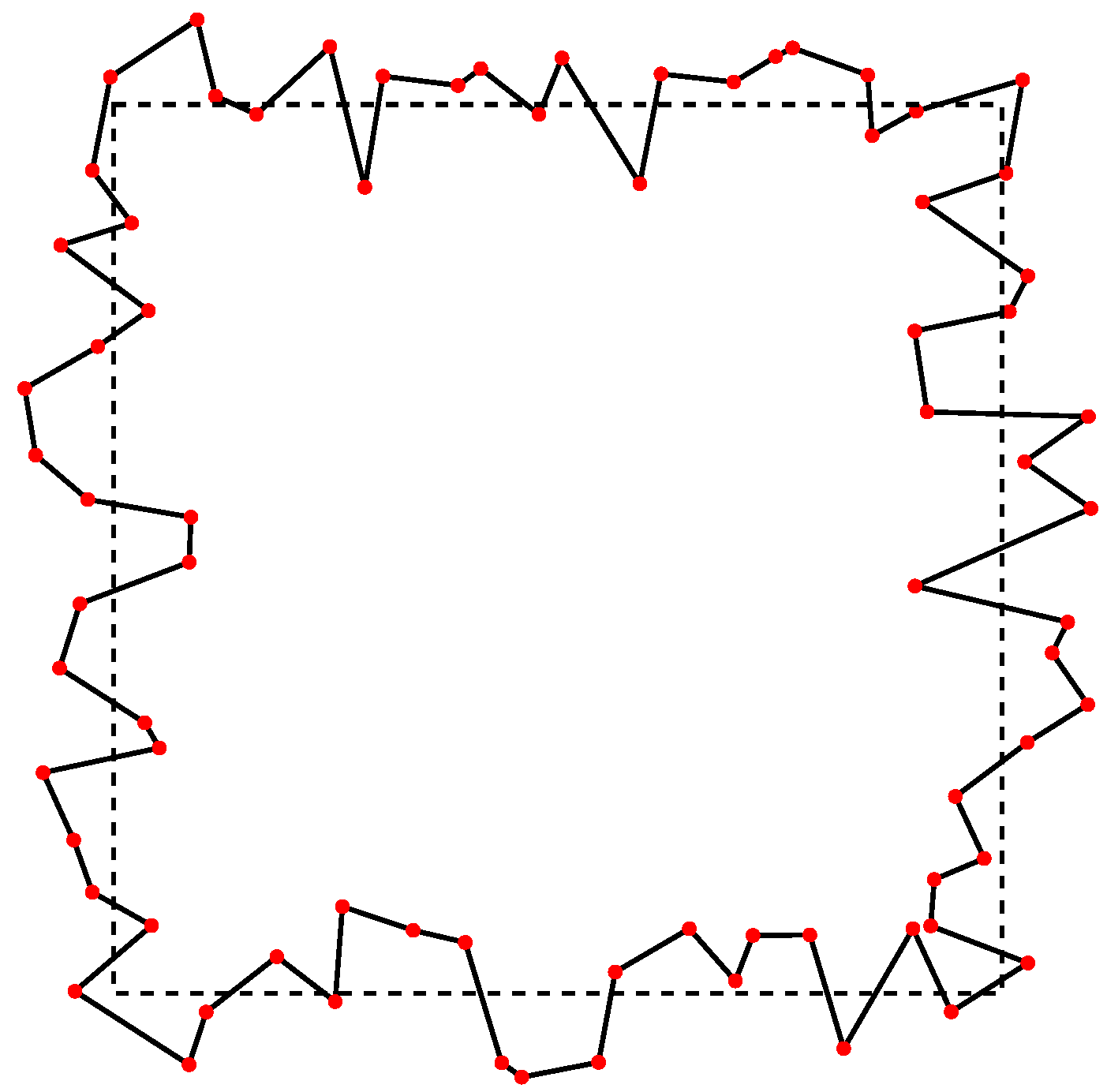
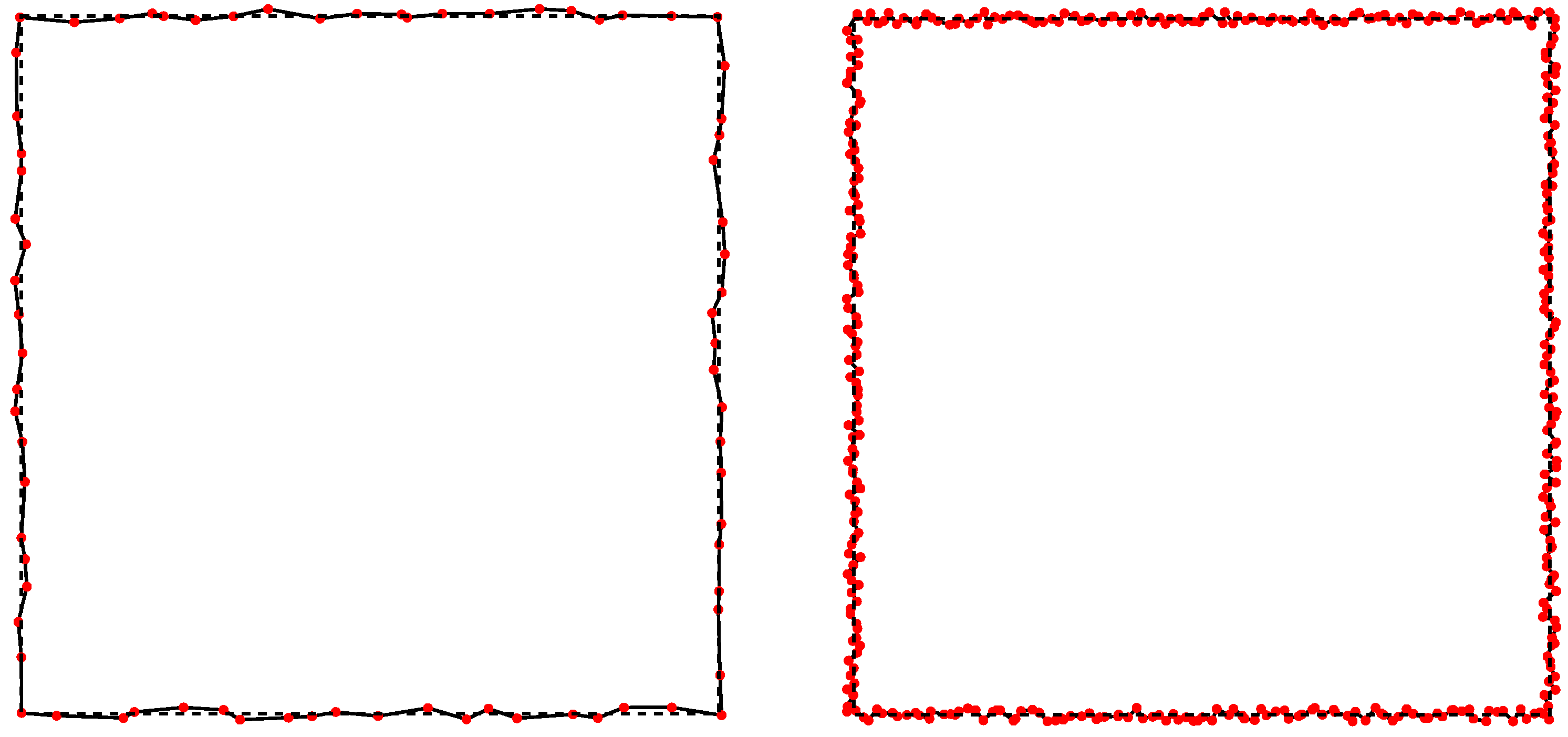

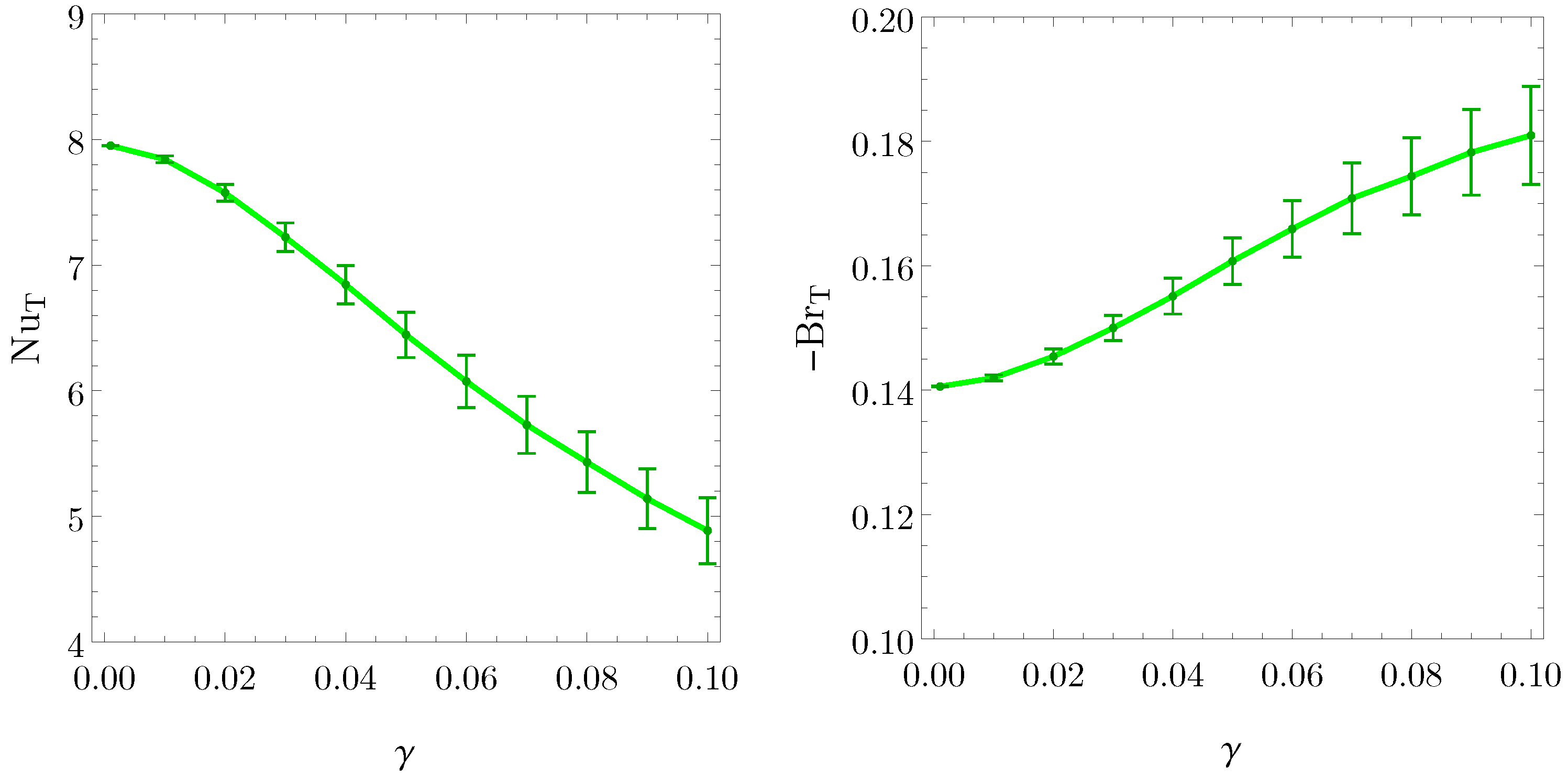

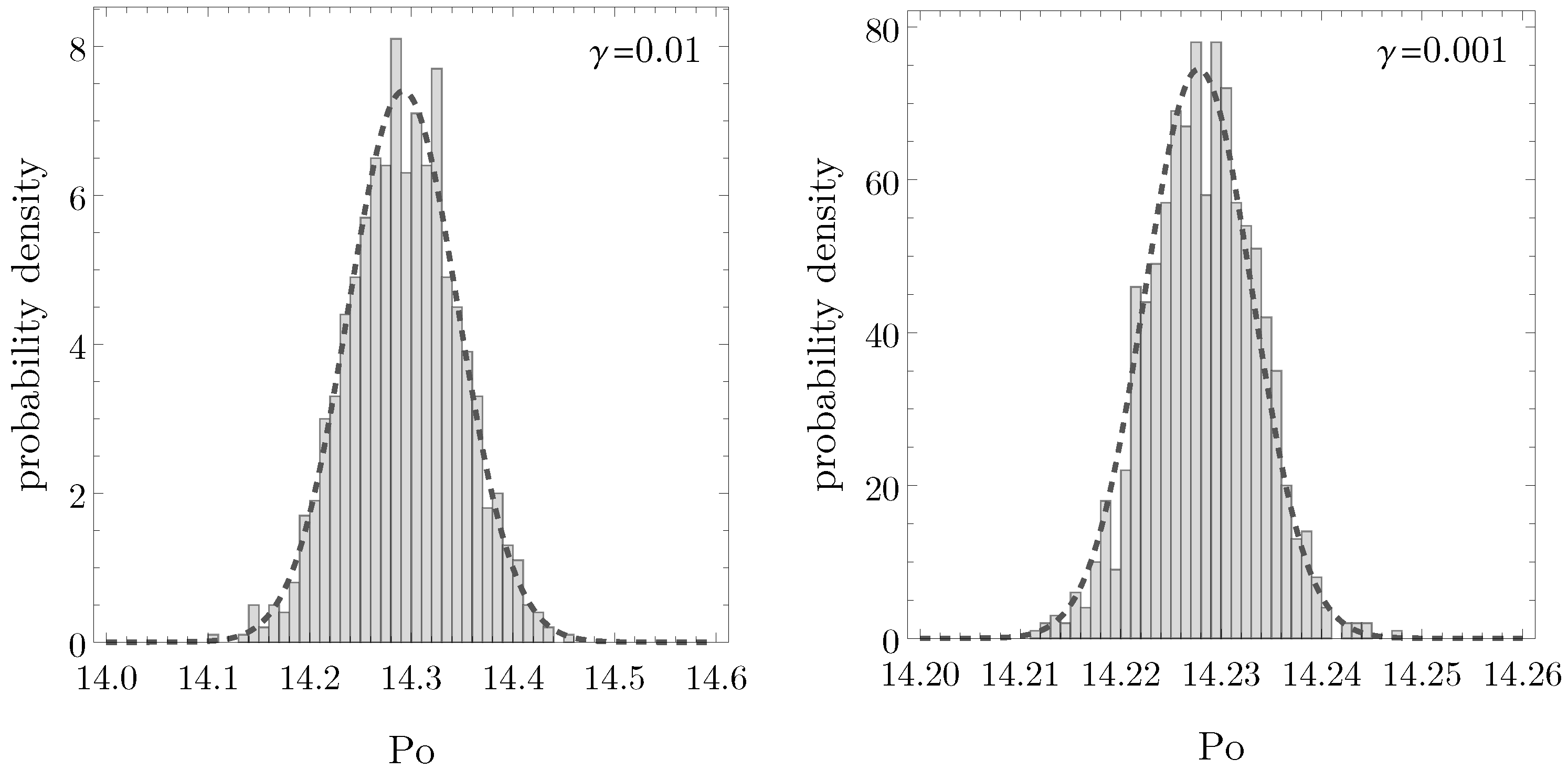
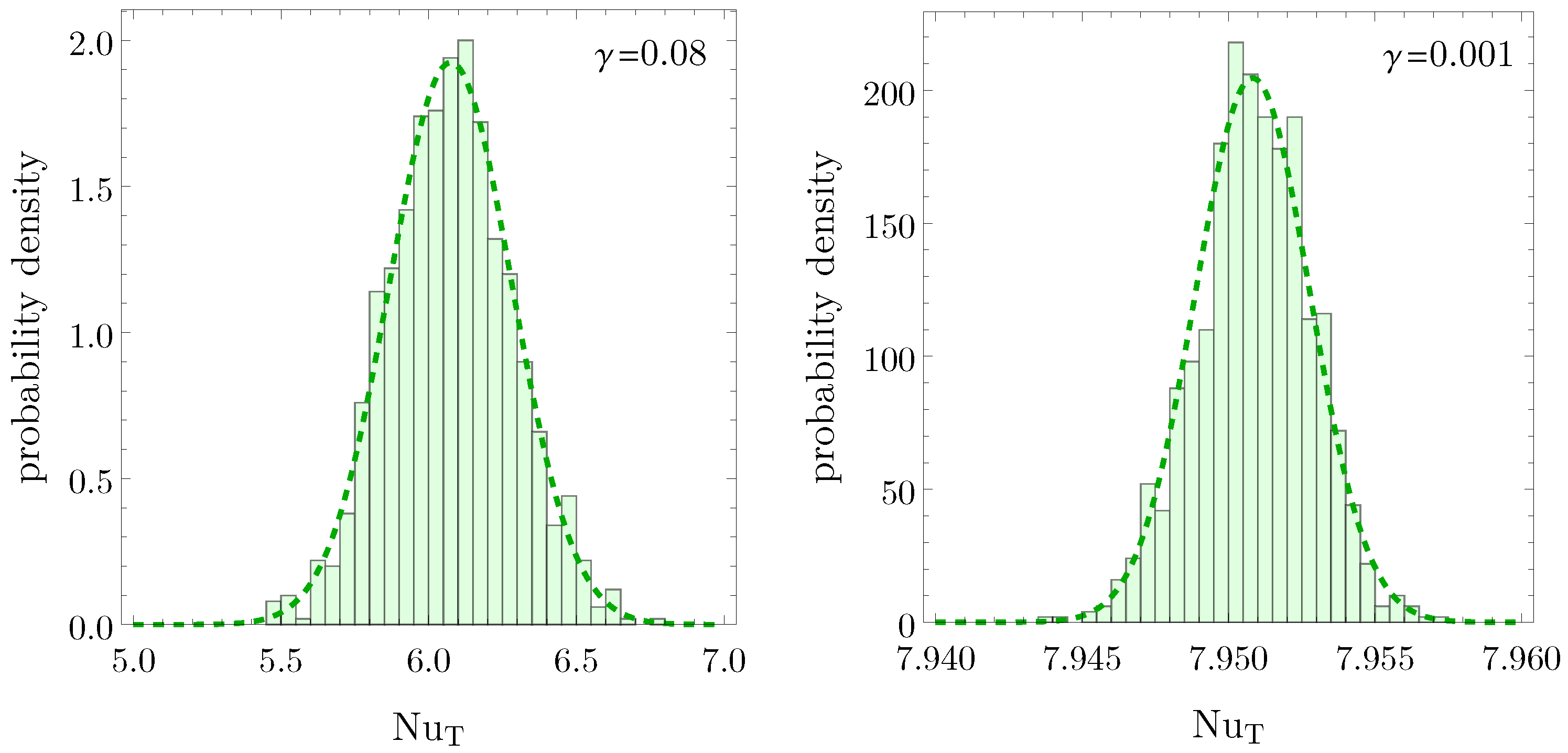
| MaxCellMeasure | |||
|---|---|---|---|
Disclaimer/Publisher’s Note: The statements, opinions and data contained in all publications are solely those of the individual author(s) and contributor(s) and not of MDPI and/or the editor(s). MDPI and/or the editor(s) disclaim responsibility for any injury to people or property resulting from any ideas, methods, instructions or products referred to in the content. |
© 2025 by the authors. Licensee MDPI, Basel, Switzerland. This article is an open access article distributed under the terms and conditions of the Creative Commons Attribution (CC BY) license (https://creativecommons.org/licenses/by/4.0/).
Share and Cite
Celli, M.; Sphaier, L.A.; Volpi, G.; Barletta, A.; Brandão, P.V. The Effect of Random Roughness for Fully Developed Forced Flow in Square Microchannels. Fluids 2025, 10, 261. https://doi.org/10.3390/fluids10100261
Celli M, Sphaier LA, Volpi G, Barletta A, Brandão PV. The Effect of Random Roughness for Fully Developed Forced Flow in Square Microchannels. Fluids. 2025; 10(10):261. https://doi.org/10.3390/fluids10100261
Chicago/Turabian StyleCelli, Michele, Leandro Alcoforado Sphaier, Gabriele Volpi, Antonio Barletta, and Pedro Vayssière Brandão. 2025. "The Effect of Random Roughness for Fully Developed Forced Flow in Square Microchannels" Fluids 10, no. 10: 261. https://doi.org/10.3390/fluids10100261
APA StyleCelli, M., Sphaier, L. A., Volpi, G., Barletta, A., & Brandão, P. V. (2025). The Effect of Random Roughness for Fully Developed Forced Flow in Square Microchannels. Fluids, 10(10), 261. https://doi.org/10.3390/fluids10100261









